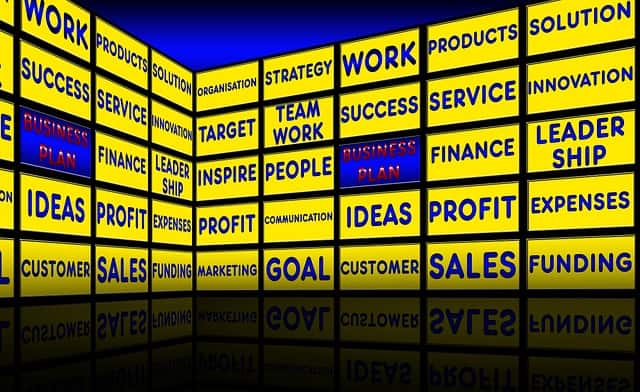Understanding Cash Flow for SME Manufacturing Businesses

A Beginner’s Guide
Imagine this: You’re the owner of a thriving small manufacturing business. Orders are pouring in, your production line is humming, and sales are strong. Yet, you constantly scramble to pay bills, meet payroll, and invest in growth opportunities. Sound familiar? You’re not alone. Many SME manufacturing businesses need help with cash flow despite having a profitable business on paper. This guide will break down the concept of cash flow, explore conventional approaches and their limitations, and present a comprehensive method tailored to manufacturers, all while addressing potential counterarguments.
What is Cash Flow, and Why Does It Matter?
Cash flow is simply the movement of money in and out of your business. It’s the lifeblood of any organization, but it’s particularly critical in manufacturing due to the often lengthy production cycles, fluctuating raw material costs, and other industry-specific challenges. Positive cash flow means more money coming in than going out, allowing you to cover expenses, reinvest in your business, and ultimately grow. Negative cash flow, on the other hand, can quickly lead to financial distress and even business failure.
Conventional Cash Flow Management Approaches
Many SME manufacturers use traditional budgeting and cash flow forecasting tools to manage their finances. While these tools offer some value, they often fail to address the unique needs of manufacturing businesses.
- Traditional Budgeting involves creating a detailed plan for income and expenses over a specific period. While budgeting can help with forecasting and planning, it could be more flexible and adapt to the dynamic nature of manufacturing. Additionally, budgeting focuses on profit rather than the cash coming in and out of the business.
- Cash Flow Forecasting: This entails predicting future cash inflows and outflows. While crucial for planning, traditional forecasting methods (direct and indirect) can be complex and inaccurate, especially in industries with variable costs and unpredictable market conditions.
- Working Capital Management refers to managing current assets (inventory, receivables) and liabilities (payables) to ensure smooth daily operations. While essential, it tends to be a short-term focus and may not adequately address manufacturers’ long-term cash flow needs.
- Short-Term Financing Options: These include overdrafts, factoring, and short-term loans. While they can provide quick access to cash in emergencies, they often come with high costs and can create dependency, making them unsustainable in the long run.
The Limitations of Conventional Approaches
The traditional approaches mentioned above share common limitations that make them less effective for SME manufacturers:
- Lack of Integration: These methods often address cash flow in isolation, not as part of an interconnected system, failing to capture the complex interplay between various financial factors.
- Reactive vs. Proactive: Conventional approaches are typically reactive, focusing on solving existing problems rather than preventing them.
- Overemphasis on Short-Term Fixes: An emphasis on short-term fixes can lead to neglecting long-term cash flow stability and sustainable growth.
- Limited Scope: Many tools and techniques need to consider the unique challenges faced by manufacturers, such as long production cycles, variable raw material costs, and seasonal demand fluctuations.
Understanding the Cash Conversion Cycle (CCC)
The Cash Conversion Cycle (CCC) is a metric that measures how long it takes your business to convert investments in inventory into cash from sales. In simpler terms, it’s the time it takes for the money you spend on raw materials and production to come back to you as revenue.
The CCC is calculated using three components:
- Days Inventory Outstanding (DIO): The average number of days to sell your inventory. For a manufacturer, it can also include the time to convert raw materials and components into finished products and the conversion costs involved.
- Days Sales Outstanding (DSO): The average number of days it takes to collect customer payment.
- Days Payable Outstanding (DPO): The average days you take to pay your suppliers.
CCC = DIO + DSO – DPO
A lower CCC is generally better, meaning your money is tied up only for a short time. For example, if your CCC is 30 days, it takes about a month from purchasing raw materials to receiving payment for the finished product.
Actively managing and optimizing your CCC can significantly improve your cash flow and overall financial health. Our article provides a more in-depth look at CCC.
The Importance of Internal Controls in Inventory Management
Effective inventory management is crucial for maintaining healthy cash flow in a manufacturing business. A significant portion of your capital is often tied up in inventory, and mismanagement can lead to increased costs, reduced cash availability, and, ultimately, a negative impact on your bottom line.
Robust internal controls play a vital role in managing inventory effectively. These controls involve a system of policies and procedures designed to ensure the accuracy of inventory records, safeguard assets, prevent theft and fraud, and promote operational efficiency.
Here are some critical aspects of internal controls in inventory management:
- Accounting for Usage, Spoilage, and Wastage: Accurate tracking of inventory usage, spoilage, and wastage is essential for maintaining accurate inventory records and identifying areas for improvement. Implementing regular physical inventory counts and comparing them to recorded balances can help identify discrepancies and potential problems.
- Reflecting Material, Labor, and Conversion Costs in Product Costs: Accurately capturing all costs associated with manufacturing a product (material, labor, overhead) is crucial for determining profitability and making informed pricing decisions. A sound cost accounting system ensures that all these costs are appropriately allocated to products, allowing for better decision-making and improved profitability.
- Cycle Counting and Reconciliation: Regularly counting a portion of your inventory (cycle counting) and reconciling it with your records can help identify errors and prevent significant discrepancies from accumulating over time. This proactive approach can save you time and money in the long run.
Establishing strong internal controls over your inventory can minimize losses, optimize stock levels, and ultimately improve cash flow.
A Comprehensive Cash Flow Management Methodology in Manufacturing
To truly master cash flow, SME manufacturers need a comprehensive and holistic approach that addresses the industry’s specific challenges. Here’s a five-step methodology designed to do just that:
- Cash Flow Awareness: Start by implementing real-time cash flow tracking and reporting. Regularly analyze your cash flow statements and key metrics like cash conversion cycle (CCC) and operating cash flow. This will give you a clear picture of your financial health and help you identify areas for improvement.
- Strategic Planning: Develop a detailed cash flow budget that aligns with your production cycles and sales forecasts. Incorporate scenario planning to account for unexpected events or market fluctuations. This will allow you to anticipate and proactively plan for potential cash flow gaps.
- Operational Optimization: Streamline your inventory management to reduce holding costs and prevent overstocking. Negotiate favorable payment terms with both suppliers and customers. Accelerate collections and manage receivables diligently to ensure timely payments.
- Financial Resilience: Build an emergency cash reserve to withstand unforeseen events like economic downturns or supply chain disruptions. Consider longer-term financing options like asset-based lending for increased flexibility and security.
- Continuous Improvement: Regularly review and refine your cash flow management strategy based on your evolving business needs and market conditions. Seek professional advice from a qualified financial advisor to ensure you’re on the right track.
Addressing Counterarguments
You might think, “This sounds great, but it’s too complex for my small manufacturing business.” You can implement this methodology in stages, starting with basic tracking and gradually adding more advanced elements as you become comfortable. The long-term benefits of improved cash flow far outweigh the initial effort required.
Another common concern is the market’s unpredictability. While it’s true that you can’t predict everything, forecasting helps identify potential issues and allows you to make proactive adjustments. Even a rough estimate is better than no plan at all.
Lastly, if you’re worried about not having enough resources for this kind of financial management, remember that many affordable software solutions are available to streamline the process. You can also consider outsourcing some aspects to a financial professional for a cost-effective solution.
Cash Flow In Manufacturing Isn’t Just About Numbers – It’s About Your Peace of Mind
Feeling overwhelmed? Staring at another stack of bills, wondering how you’ll make payroll this month? You’re not alone. Running a manufacturing business is tough, and managing cash flow can feel like an endless juggling act. Trust me, I get it.
You might be thinking, “Another guide on cash flow? I barely have time to breathe, let alone read a whole article.” That’s precisely why this guide is tailored for YOU – the busy business owner sick of the cash flow roller coaster.
But here’s the thing: understanding your cash flow isn’t just about number crunching. It’s about gaining control. It’s about replacing that knot in your stomach with a sense of confidence. It’s about knowing that no matter what curveballs come your way, you’ve got a solid plan in place.
The strategies outlined in this guide are your roadmap to financial peace of mind. They’re not about adding more to your plate, but about working smarter, not harder. Imagine finally having a clear picture of your financial health, knowing exactly where your money is coming from and going to. Imagine being able to forecast potential cash flow issues and proactively address them, instead of constantly putting out fires.
Imagine feeling empowered to make strategic decisions that drive your business forward instead of being held back by financial constraints.
This is within your reach. You’ve got the passion, the drive, and the grit to make your manufacturing business successful. Now, let’s arm you with the knowledge and tools to conquer cash flow and achieve the financial freedom you deserve.
Ready to take the first step? You’ve got this.



